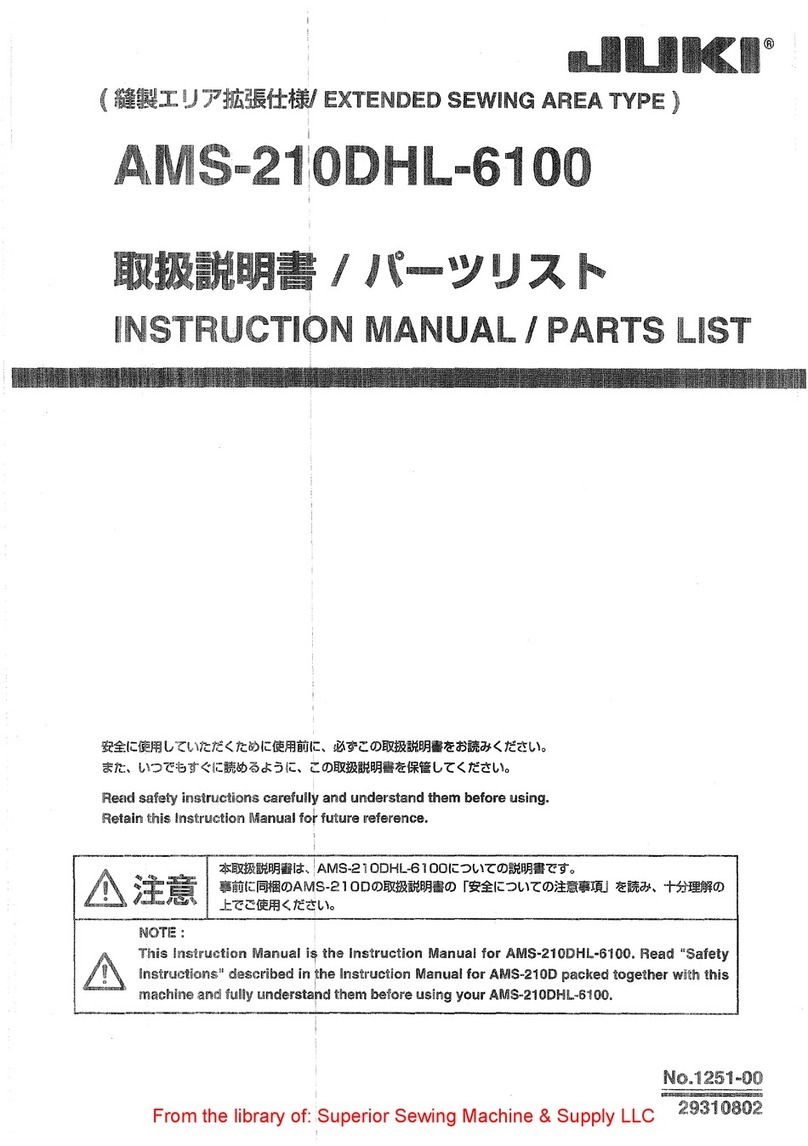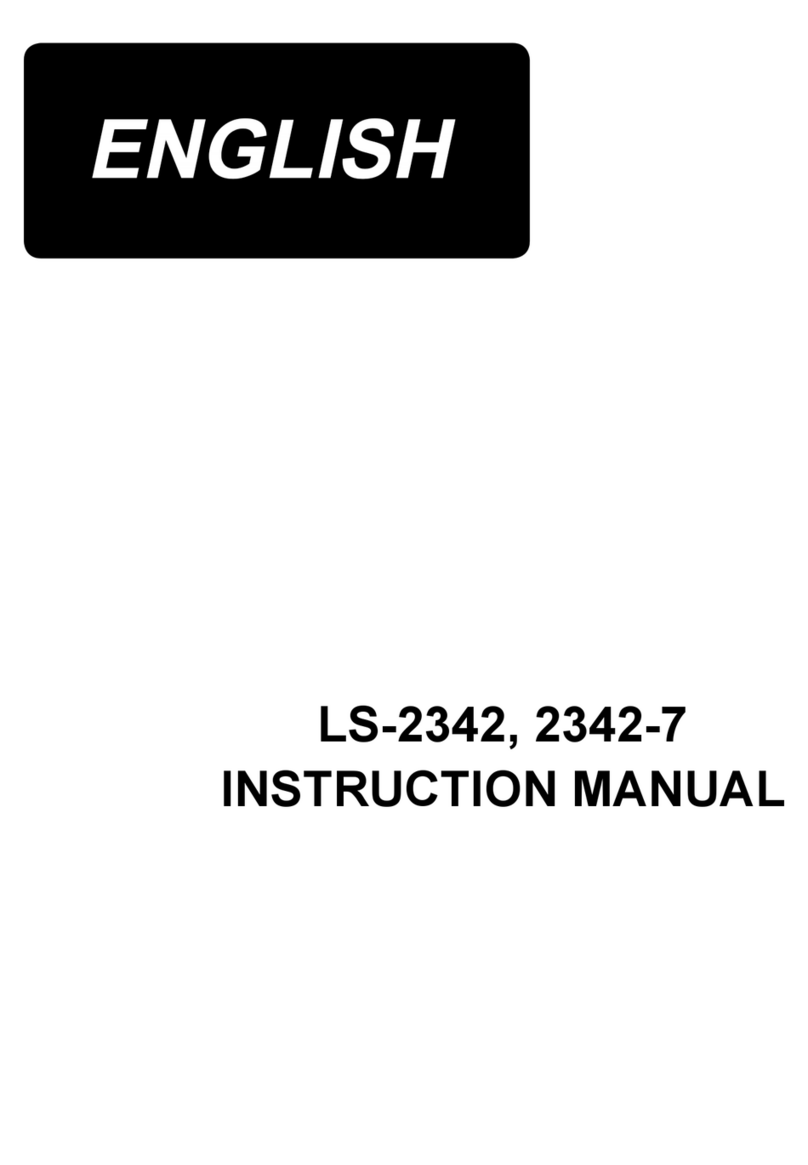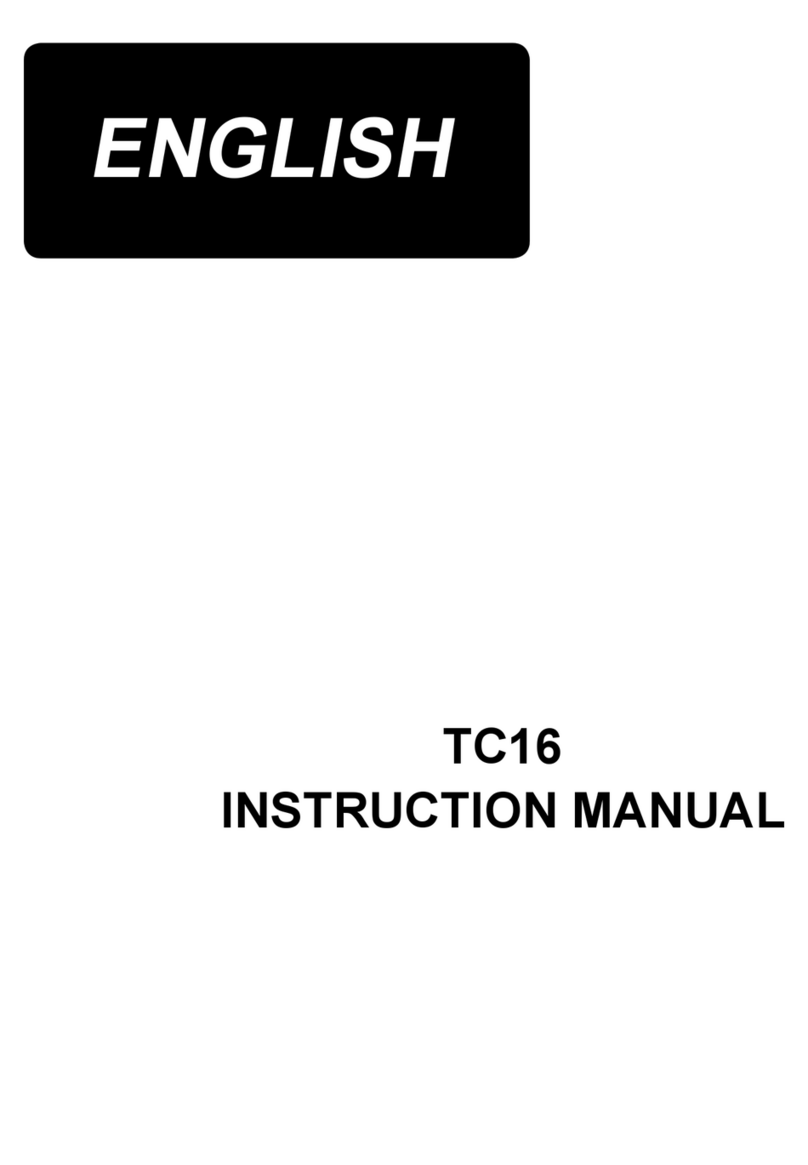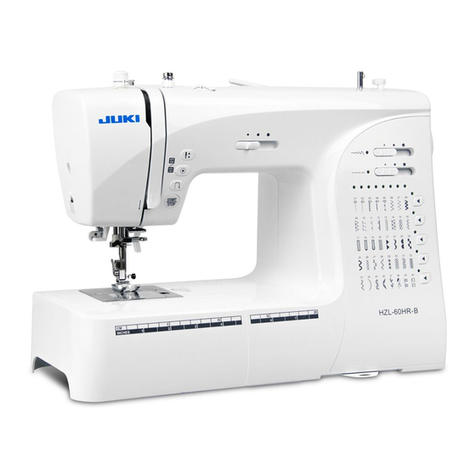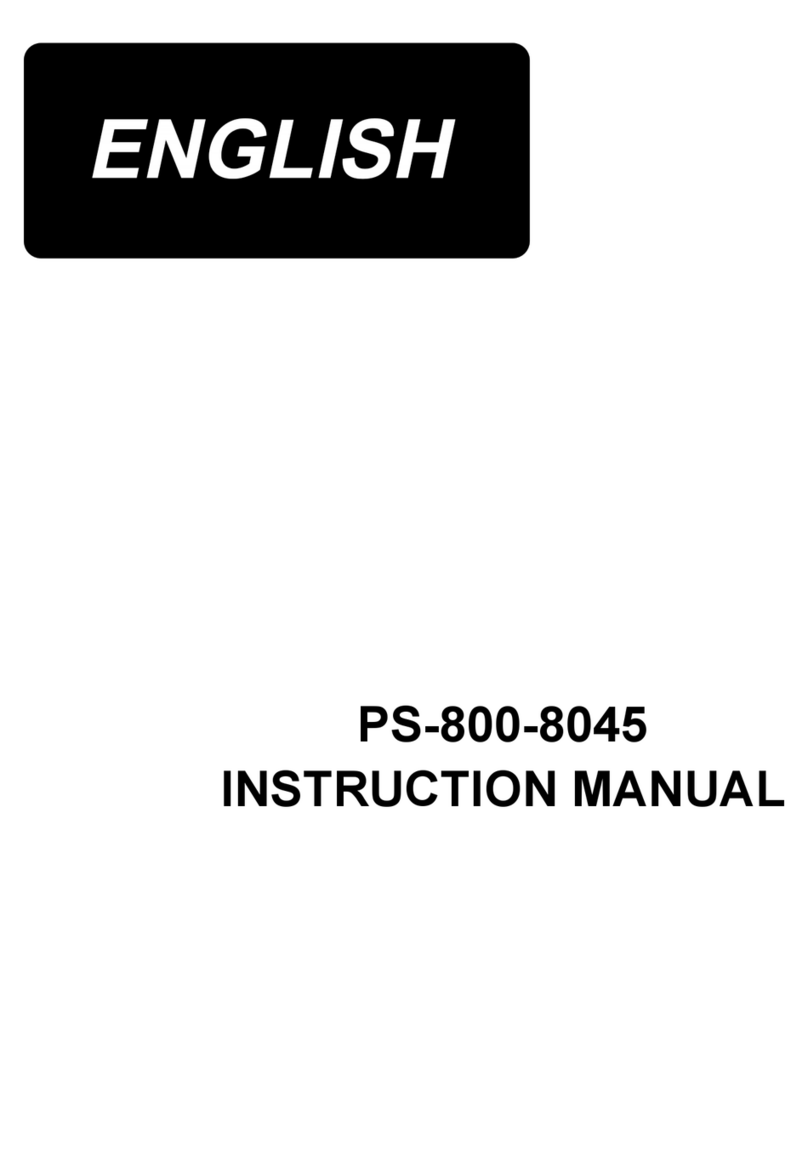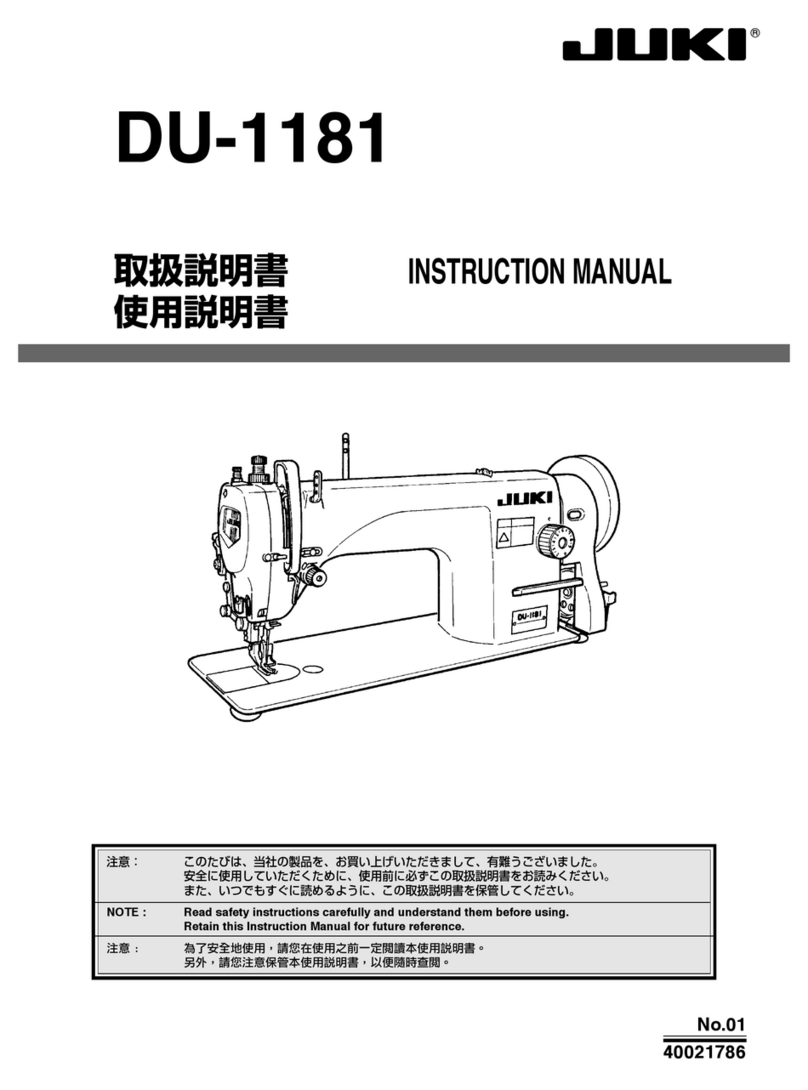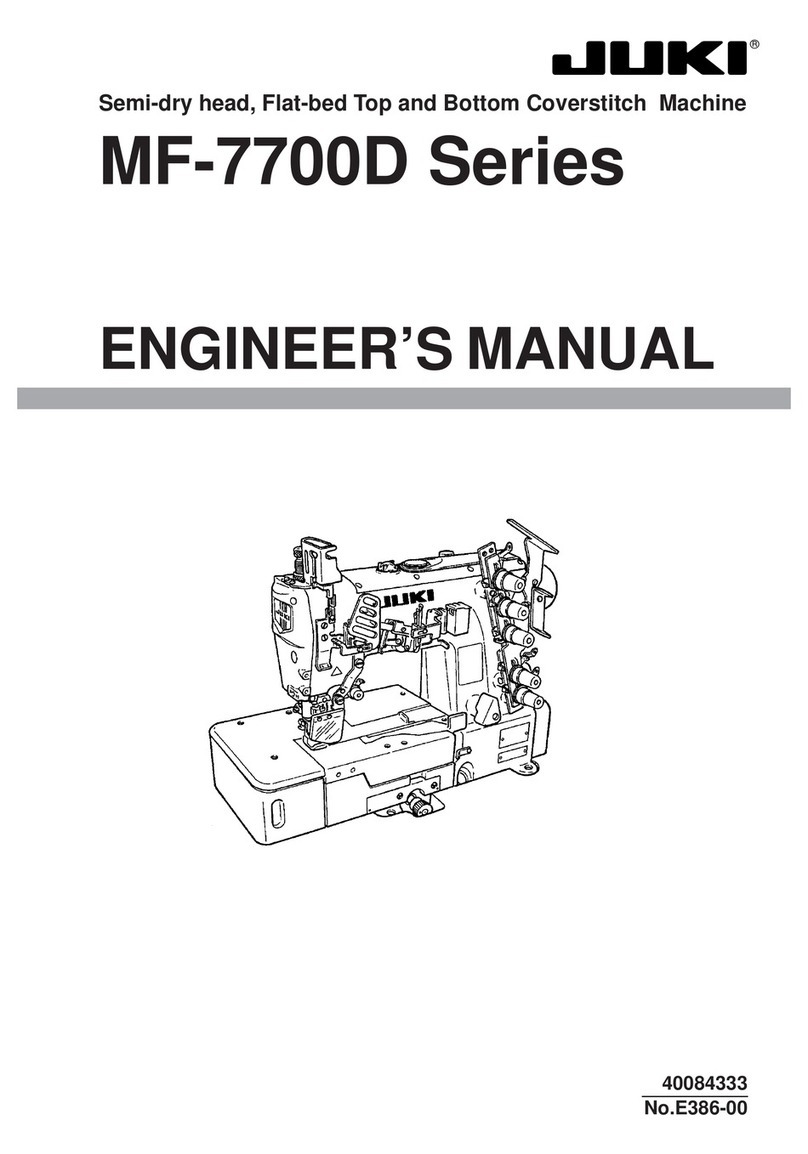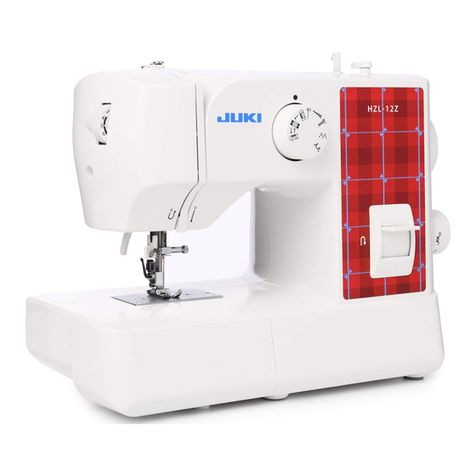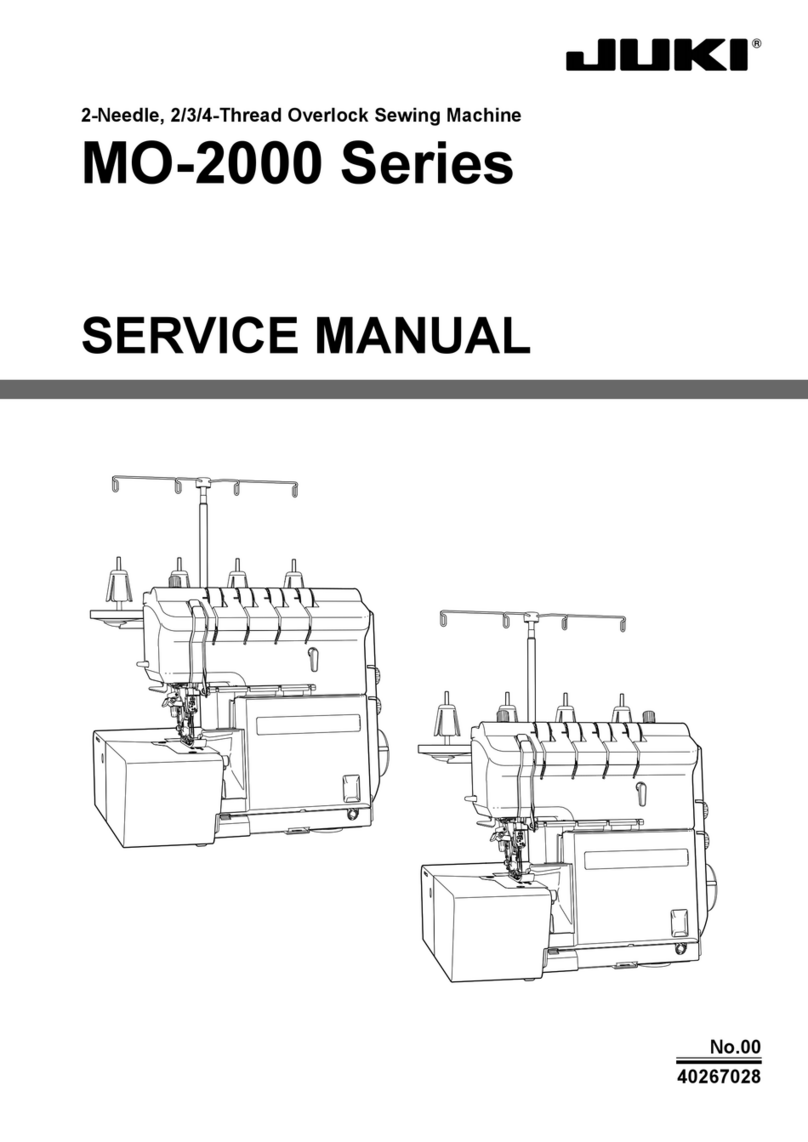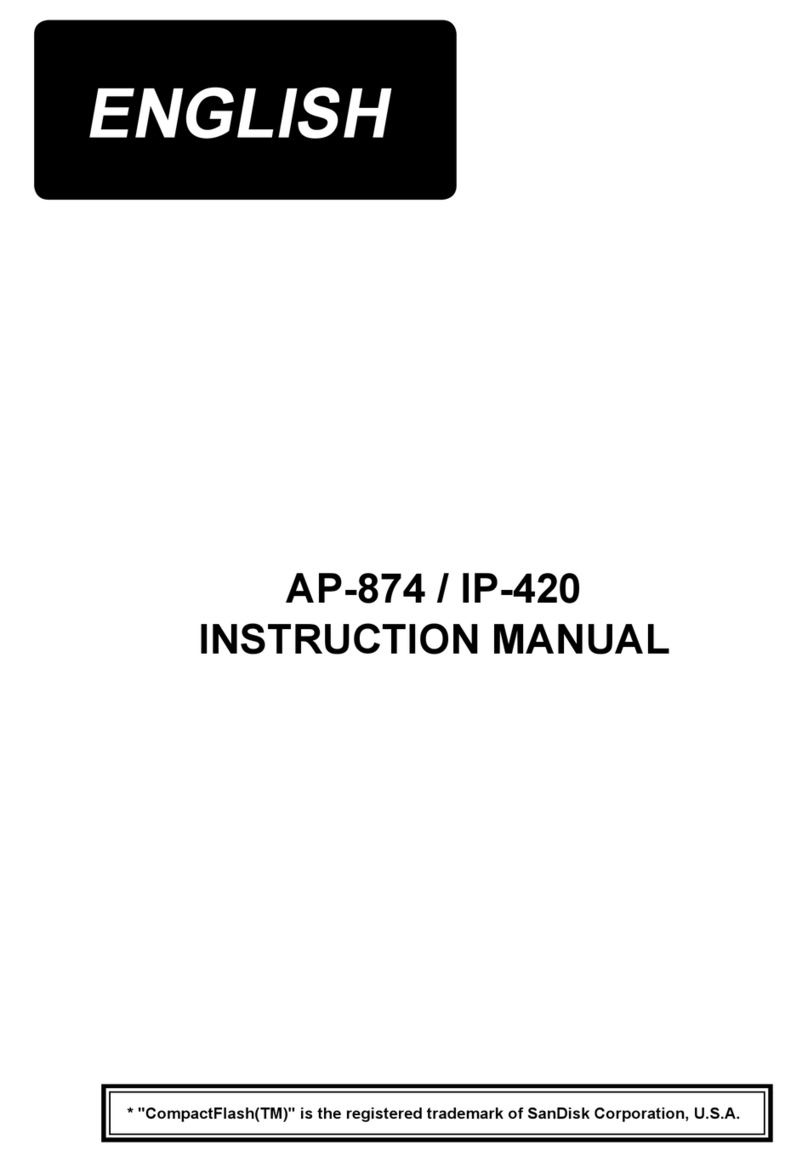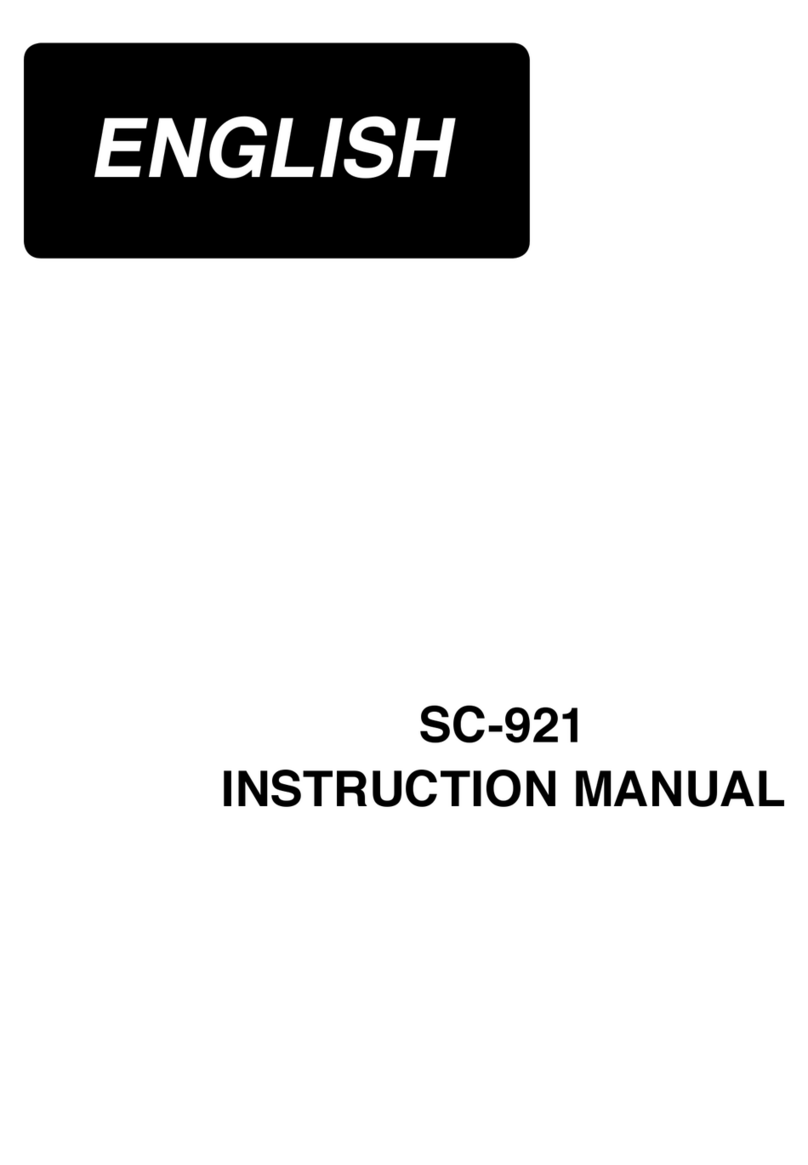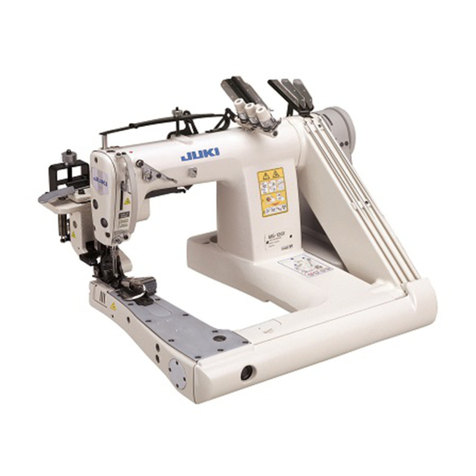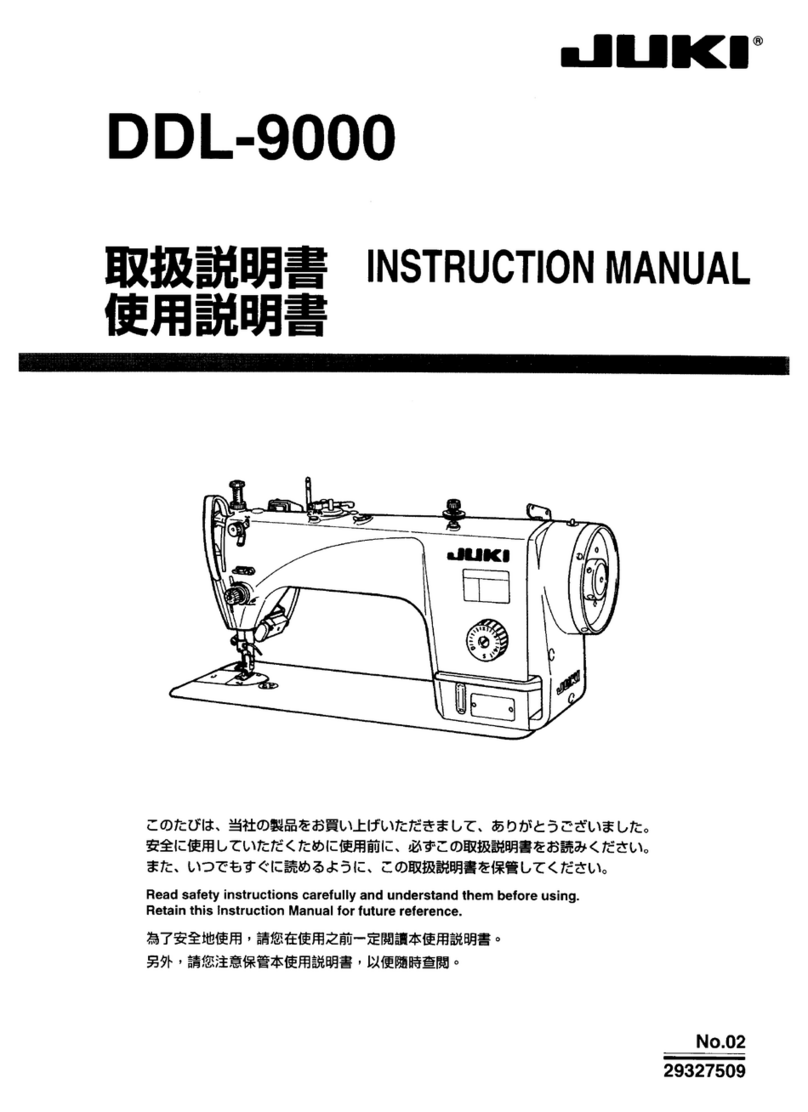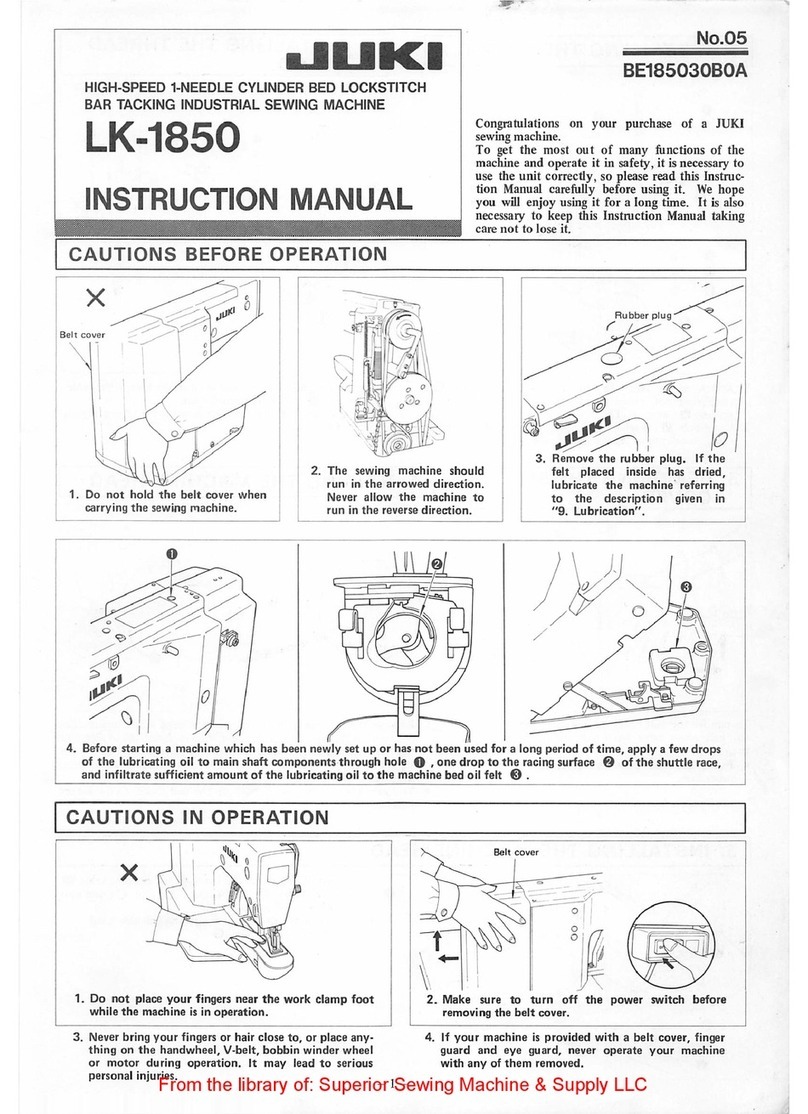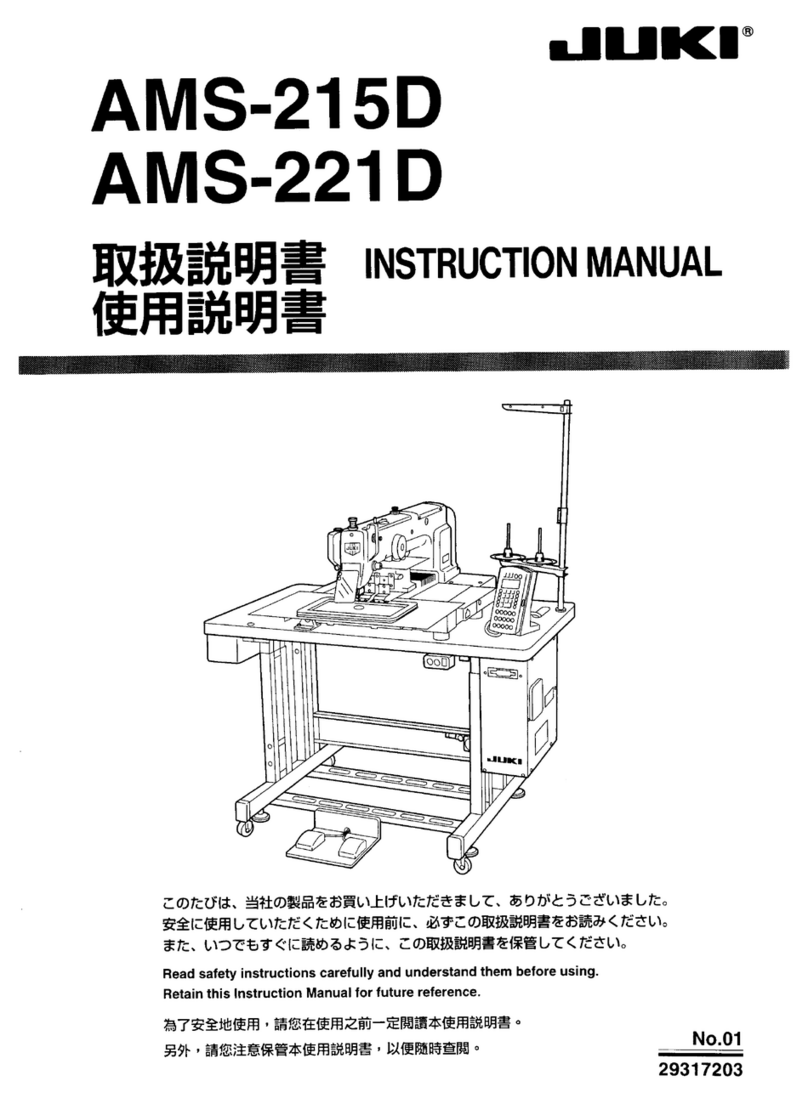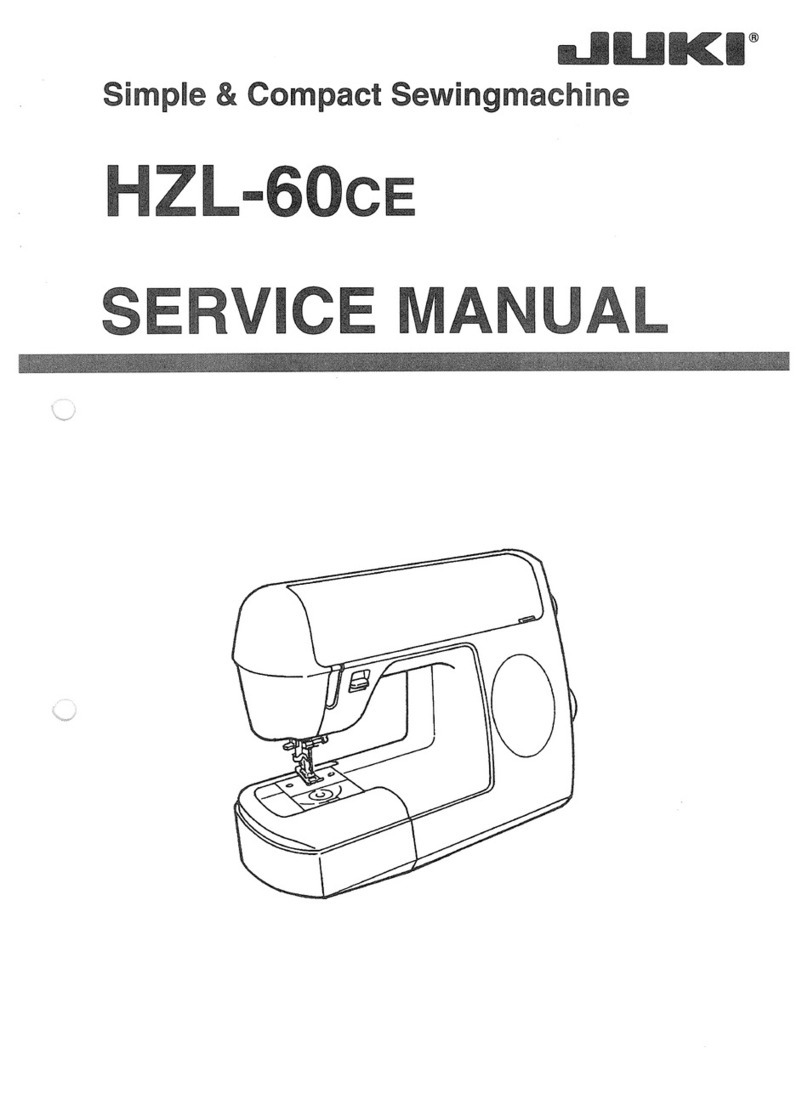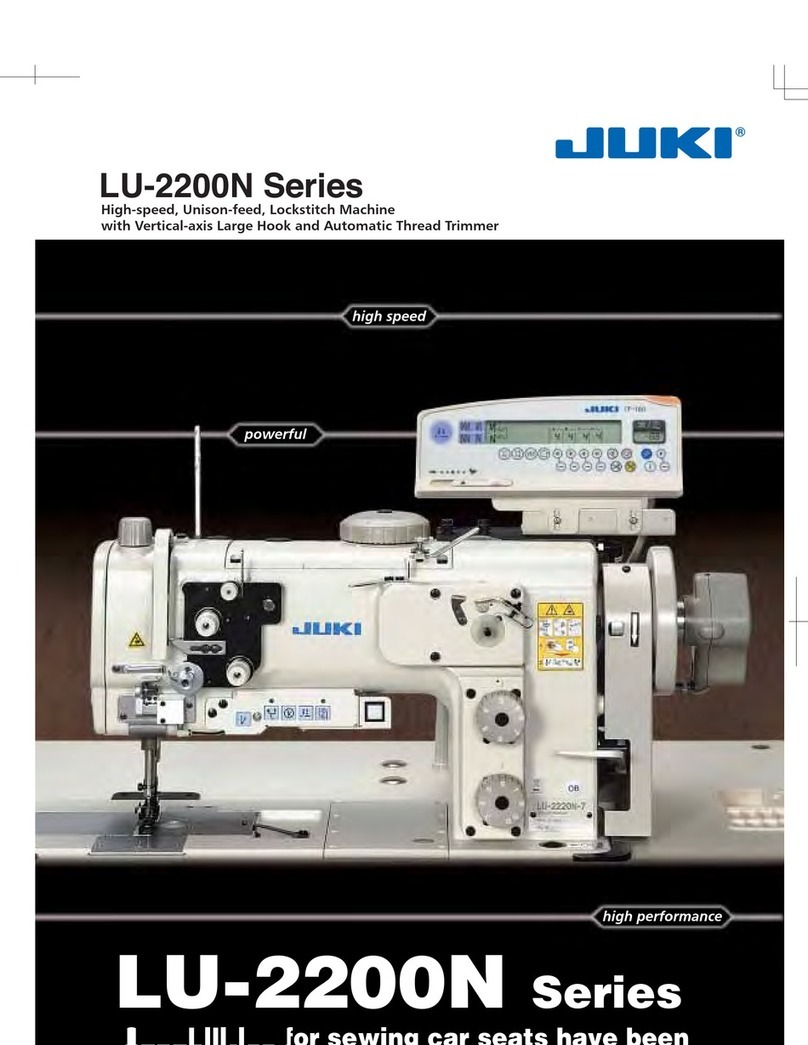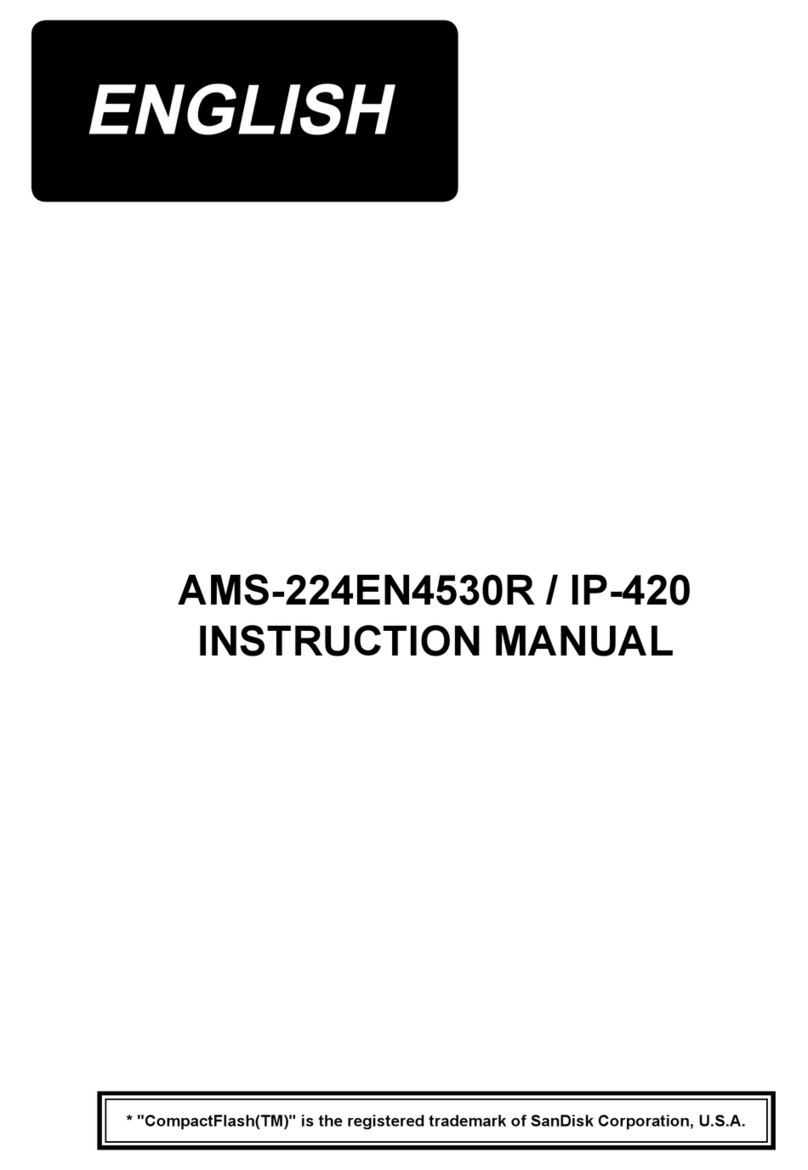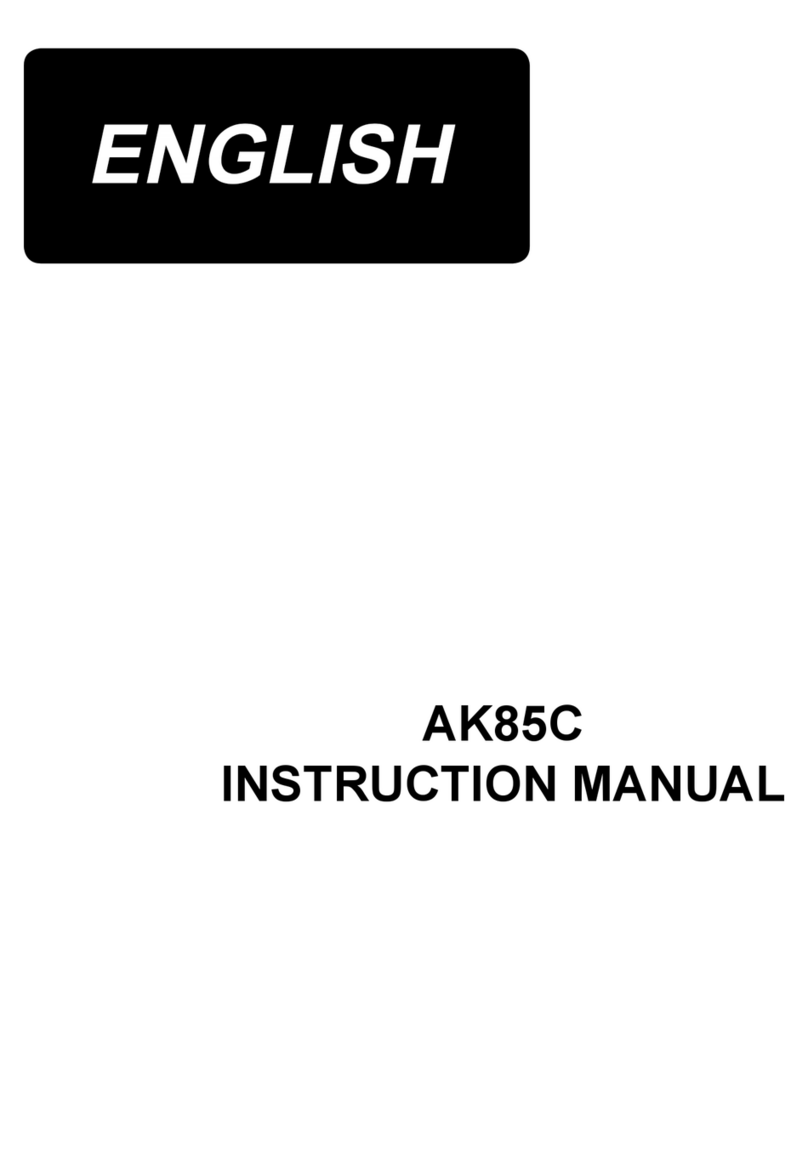
i
CoNTENTS
1. NAME oF EACH CoMPoNENT .................................................................................................. 1
2. SPECIFICATIoNS......................................................................................................................... 2
2-1. Specications of the machine head ..................................................................................................2
2-2. Specications of the electrical box ...................................................................................................2
3. STITCH PATTErN TABLE ........................................................................................................... 3
4. INSTALLATIoN............................................................................................................................. 4
4-1. Installation of the sewing machine head ..........................................................................................4
4-2. Removing the needle bar stopper .....................................................................................................5
4-3. Attaching the knee-lifter .....................................................................................................................5
4-4. Adjusting the height of the knee lifter...............................................................................................5
4-5. Installing the electrical box ................................................................................................................6
4-6. Connecting the power switch cord (Japan and general export area) ............................................6
4-7. Installing the operation panel (IT-100D) ............................................................................................ 6
4-8. Connecting the cords .........................................................................................................................7
(1) Preparation of wiring ........................................................................................................................................ 7
(2) Connecting the connectors............................................................................................................................... 8
4-9. Attaching the connecting rod .......................................................................................................... 11
4-10. Adjustment of the pedal ................................................................................................................. 11
4-11. Installing the thread stand.............................................................................................................. 12
4-12. Installing the bird’s nest prevention (CB) type sewing machine................................................12
4-13. Lubrication (LZ-2290A-SS • A-SU (-7) )..........................................................................................13
4-14. Test run ............................................................................................................................................14
(1) Turn ON the power......................................................................................................................................... 14
(2) How to operate the pedal ............................................................................................................................... 14
5. PrEPArATIoN BEForE SEWING ........................................................................................... 15
5-1. Inserting the needle .........................................................................................................................15
5-2. Removing the bobbin case ..............................................................................................................15
5-3. Winding the bobbin thread...............................................................................................................15
5-4. Placing the bobbin case and the bobbin ........................................................................................16
5-5. Threading the machine head ...........................................................................................................17
5-6. Adjusting the stitch length ...............................................................................................................17
5-7. Adjusting the condensation stitching .............................................................................................17
6. HoW To uSE THE oPErATIoN PANEL .................................................................................. 18
6-1. Names and functions of the respective sections...........................................................................18
6-2. Before setting the pattern ................................................................................................................20
(1) Limitation of the max. zigzag width ................................................................................................................ 20
(2) Setting the reference of stitch base line ......................................................................................................... 22
6-3. Basic screen .....................................................................................................................................23
6-4. List of the display pictographs of each screen..............................................................................24
6-5. Setting the sewing pattern ...............................................................................................................35
(1) Selecting the zigzag pattern .......................................................................................................................... 35
6-6. Setting of the sewing shape.............................................................................................................37
(1) 2-step zigzag, 3-step zigzag and 4-step zigzag stitch.................................................................................... 37
(2) Scallop stitching ............................................................................................................................................. 38
(3) Blind stitch sewing.......................................................................................................................................... 40
(4) Custom pattern stitching................................................................................................................................. 41
6-7. Reverse feed stitching......................................................................................................................42
(1) Standard condensation .................................................................................................................................. 43
(2) 2-point condensation ...................................................................................................................................... 44
(3) Condensation custom..................................................................................................................................... 46
(4) Comparison table of the reverse stitch of each shape ................................................................................... 47
6-8. Selection of the kind of stitching.....................................................................................................48
(1) Overlapped stitching....................................................................................................................................... 48
(2) Programmed stitching .................................................................................................................................... 48
6-9. Custom pattern..................................................................................................................................50
(1) Custom pattern setting ................................................................................................................................... 50
(2) New creation of the custom pattern ............................................................................................................... 51
(3) Custom pattern edit ........................................................................................................................................ 52
(4) Registration, copy and deletion of the custom pattern ................................................................................... 52
6-10. Condensation Custom....................................................................................................................54
(1) Condensation custom setting ......................................................................................................................... 54
(2) Condensation custom edit.............................................................................................................................. 55
6-11. Pattern stitching ..............................................................................................................................56
(1) Setting the pattern stitching............................................................................................................................ 56
(2) Registering the pattern stitching..................................................................................................................... 57
(3) Copy and deletion of the pattern stitching ...................................................................................................... 58
